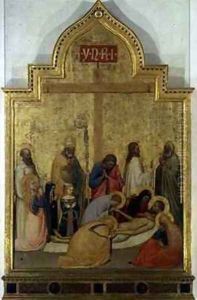Tommaso di Stefano Giottino Paintings
Tommaso di Stefano, better known as Giottino, was an Italian painter from Florence, born around 1324. His nickname 'Giottino,' meaning 'little Giotto,' is believed to have been derived from the influence of Giotto di Bondone on his style or possibly because he was erroneously thought to be Giotto's son. Despite the lack of concrete information on his life and training, Giottino is recognized for his contribution to the development of Florentine painting during the 14th century.
Giottino's work is characterized by its emotional expressiveness and narrative clarity, attributes that reveal the profound impact of Giotto's innovations on his art. However, Giottino's style also demonstrates a personal interpretation that distinguishes his work from his predecessors. He was particularly adept at rendering space and depth in his compositions, and his figures exhibit a sense of volume and solidity that was advanced for his time.
One of Giottino's most famous works is the fresco cycle in the Sassetti Chapel at Santa Trinita in Florence, which depicts scenes from the life of St. Francis of Assisi. Although the attribution of these frescoes has been debated, many scholars credit them to Giottino due to stylistic similarities with his other works. His other notable works include the 'Pietà' in the church of San Remigio in Florence and the 'Descent from the Cross' in the Rinuccini Chapel at Santa Croce.
Giottino's career was relatively short, and his life was cut tragically short when he died in 1369. Despite this, his artistic legacy had a lasting impact on the painters of the late 14th and early 15th centuries in Florence. His ability to blend narrative drama with refined compositional techniques made him a pivotal figure in the transition from the medieval to the early Renaissance style in Italian painting.
